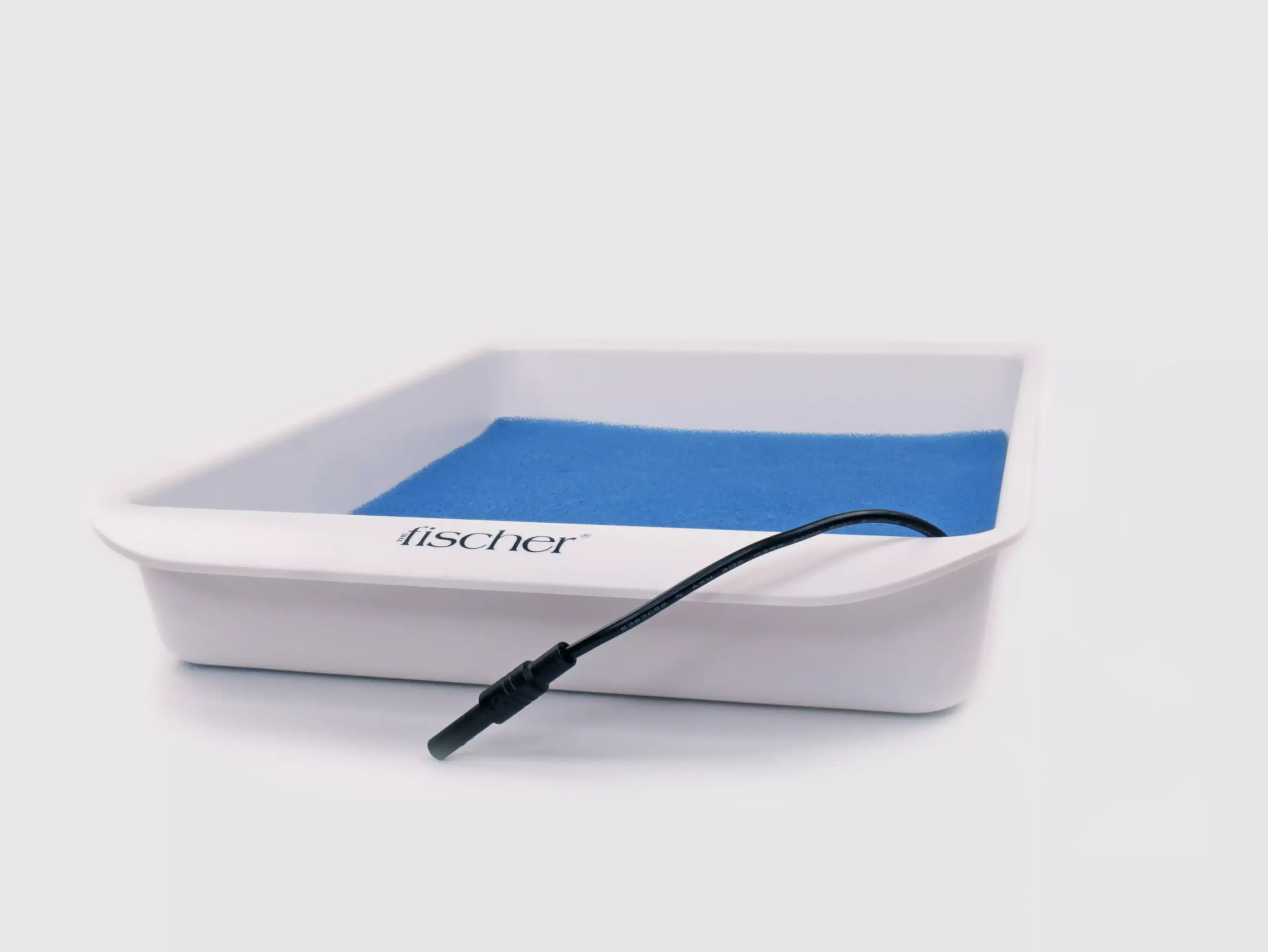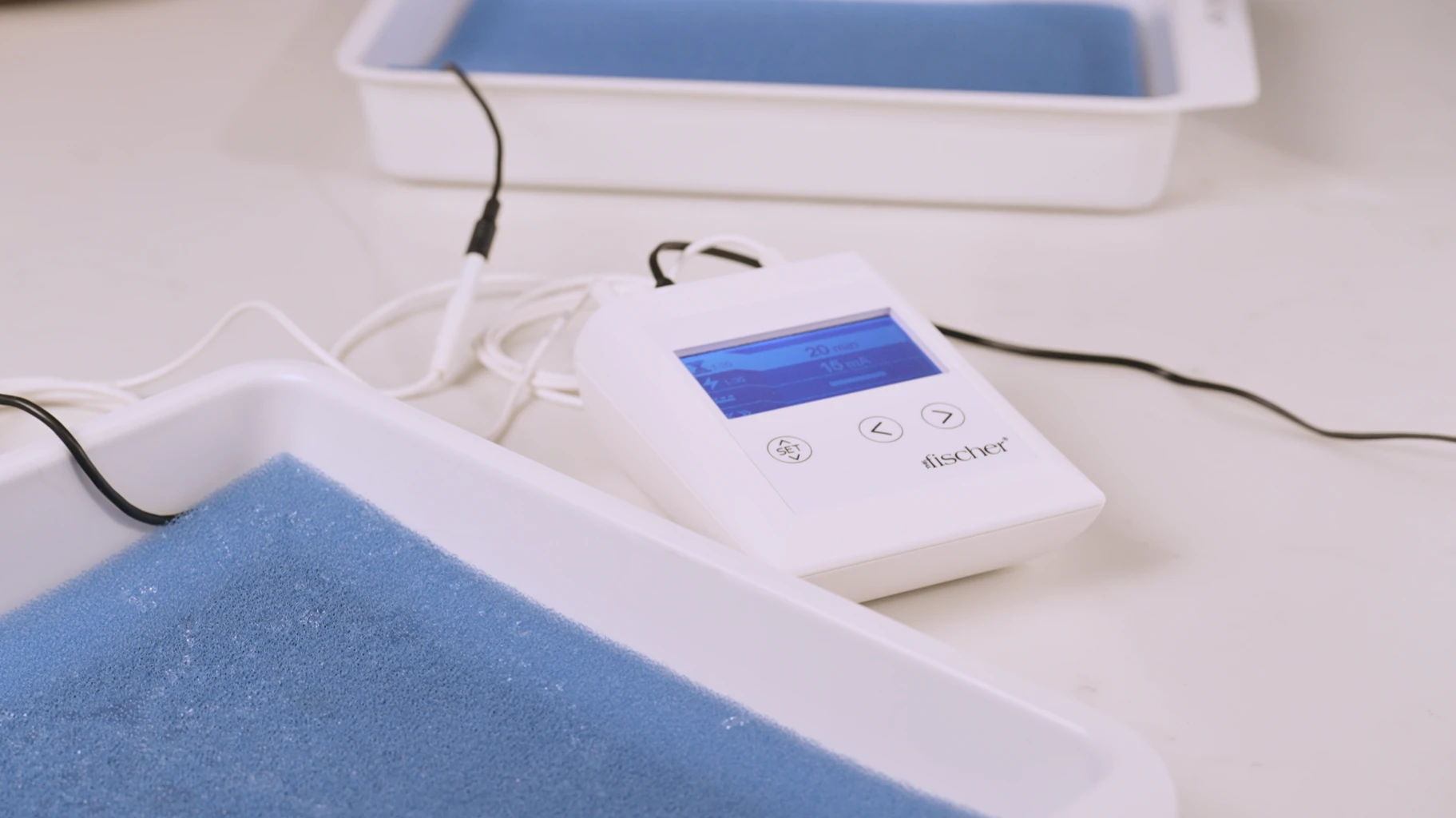September 21, 2023
No Comments
By
Daniel Moyer
How Old Do You Have To Be To Use An Iontophoresis Device?
SAFEGUARDS
Iontophoresis devices with sophisticated safeguards like antishock software and intuitive user interfaces facilitate the safe use of electricity in today’s success stories. In fact, the The Fischer tap water iontophoresis device is approved for pediatric patients as young as 6-years-old. Here’s why.

WHY METAL-FREE MATTERS
Any direct contact with aluminum or stainless-steel conductors results in skin burns when operating a traditional metal-based iontophoresis device. The Fischer’s use of silicone/graphite electrodes as well as insulated socket and connector systems provides protection for younger users, eliminating the possibility of open metal contact burns.
Over the course of iontophoresis treatments, metal electrodes undergo an electrolytic dissolution process aka they release metal ions into the water. As the metal electrodes tarnish or become pitted, it reduces the treatment’s effectiveness. It’s another reason why younger patients with skin sensitivities or metal allergies were previously disqualified from being prescribed iontophoresis.
Graphite, on the other hand, is considered to be an electrolytically inert material. The Fischer’s silicone-graphite electrodes are designed to be highly-conductive, abrasion resistant, durable, yet soft to the touch. They will not release metal ions into the water, which would have otherwise been delivered into your child’s skin.
Over the course of iontophoresis treatments, metal electrodes undergo an electrolytic dissolution process aka they release metal ions into the water. As the metal electrodes tarnish or become pitted, it reduces the treatment’s effectiveness. It’s another reason why younger patients with skin sensitivities or metal allergies were previously disqualified from being prescribed iontophoresis.
Graphite, on the other hand, is considered to be an electrolytically inert material. The Fischer’s silicone-graphite electrodes are designed to be highly-conductive, abrasion resistant, durable, yet soft to the touch. They will not release metal ions into the water, which would have otherwise been delivered into your child’s skin.

![Detailed image showcasing the black, metal-free silicone electrodes designed for RA Fischer's iontophoresis device, 'The Fischer,' used in the treatment of hyperhidrosis. The background is plain white. [ Iontophoresis Device for Sweating ]](https://www.rafischer.com/wp-content/uploads/2023/09/the-fischer-iontophoresis-machine-hyperhidrosis-sweat-treatment-home-hospital-insurance-fda-approved-ra-fischer-22-scaled.webp)
FREE CHOICE OF SETTINGS
Hyperhidrosis affects every patient uniquely, and therefore no iontophoresis treatment is one-size-fits-all. From the duration of the treatment, the strength of the current, to the type of current and direction of polarity, it’s important to personalize your device’s settings to your experience.
With The Fischer, the integration of Direct and Pulsed Current into one device opens up all possibilities to the user for conducting treatment according to their individual requirements. For patient’s with serious hyperhidrosis symptoms, or those looking achieve dryness as quickly as possible, Direct Current remains the preferred option for doctors like Dr. Rolf Eilers from Saalmann Medical.
With The Fischer, the integration of Direct and Pulsed Current into one device opens up all possibilities to the user for conducting treatment according to their individual requirements. For patient’s with serious hyperhidrosis symptoms, or those looking achieve dryness as quickly as possible, Direct Current remains the preferred option for doctors like Dr. Rolf Eilers from Saalmann Medical.
“If you’re starting with iontophoresis, start with Direct Current. Keep it simple. This is the most effective way to see results.”
Dr. Rolf Eilers
“If you go to literature and clinical studies, Direct Current is really the most effective way to treat hyperhidrosis,” Dr. Eilers says. “With Pulsed Current, the Direct Current is switched on and off in very short cycles. This results in a different awareness of the electricity, a different feeling. Literature and clinical studies tell us that the efficacy is reduced. So I recommend that if you’re starting with iontophoresis, start with Direct Current. Keep it simple. This is the most effective way to see results."

For patients with body resistance or sensitivity issues, switching to Pulsed Current is just a click away with The Fischer. Thanks to the integration of both modes of operation into one device, pediatric patients can optimize individual settings during the course of their treatment without having to decide beforehand upon the preferred equipment type.
“From my point of view, the most important thing in the beginning is to see results as soon as possible,” Dr. Eilers continues. “That’s why we recommend the Direct Current. [But] for patients who may only be able to tolerate 1-3mA, if you’re quite sensitive to that, the Pulsed Current might be more practical for you.”
Dr. Rolf Eilers
EASE OF USE
Setting up The Fischer is simple. The three-button interface and pictorial settings on the device’s screen are self-explanatory. Better yet: the device’s memory stores previous session data, allowing for a one-touch start.
THE FISCHER
Reach out today
Contact one of our Treatment Specialists today to answer any and all of your questions about the Fischer.
Leave a Reply Cancel reply
You must be logged in to post a comment.